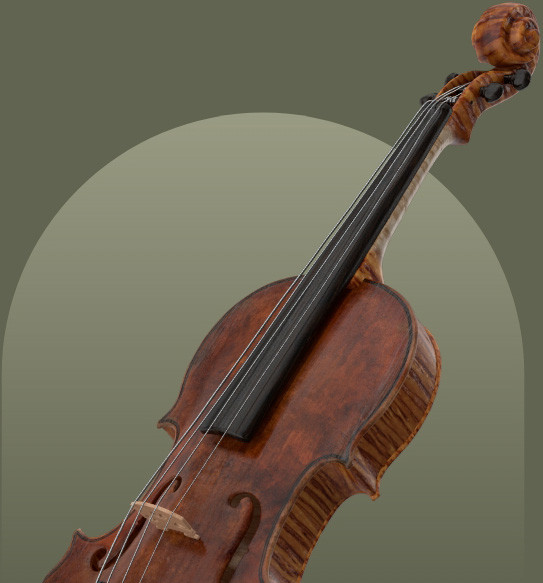John Dilworth
MENNÉGAND, Charles Born 1822 Nancy, died 1885 Villers-Cotterets France. Apprenticed in Mirecourt. Pupil of Rambeaux in Paris 1840-1845. Worked for Maucotel 1851. Established independently in Amsterdam, Netherlands 1852-1857, subsequently returning to Paris. Medals awarded at several competitions in France, although most productive years were those in Amsterdam. In Paris he was chiefly occupied with repair and restoration work for which he has a fine reputation. Mostly Stradivari models. Violins, violas, and cellos. Signed internally: ‘C. Mennegand’. Printed labels: Mennégand / Luthier / 26 rue de Trévise, Paris / 1867 C. Mennégand luthier / 26, rue de Trévise, / Paris 1877
George Hart
He is distinguished both as a maker and repairer of instruments. He entered the service of Rambaux in Paris in 1840. He has been rightly regarded as having displayed singular ability in the delicate and difficult task of ” cutting” the large Italian Violoncellos and Tenors. The practice of reducing the dimensions of Cremonese instruments has happily come to be looked upon as emulative of the acts of the Goths and Vandals. It is in any case certain that numerous instruments have been operated upon with no greater skill than might have been expected at the hands of those barbarians. “These ruthless men,” remarks Charles Reade, “just sawed a crescent off the top, and another off the bottom, and the result is a thing with the inner bout of a giant and the upper and lower bout of a dwarf.” He rightly names this, ” cutting in the statutory sense, viz., cutting and maiming,” and implores the owner of an instrument in its original state to spare it, and if too large, to play on one of the value of £5, with the Cremona set before him to look at while he plays. To ” cut” a Cremona, and to cut a diamond into a brilliant or a rose, are tasks equally difficult. The indifferent operator in both cases suffers more or less from the injury and annoyance his unskilfulness has occasioned. Borgis, a Venetian diamond-cutter, was employed by Shah Jehan to cut the Koh-i-nor, and in place of a reward was fined ten thousand ducats for his imperfect performance. Had it happened that some possessors of Cremonese gems had inflicted monetary or other punishment on incapable instrument-cutters, the world would have been richer in Cremonas. Mennegand was at Amsterdam for a few years, and returned to Paris in 1857.
Cecie Stainer
b. June 19, 1822, at Nancy; d. Jan. 9, 1885, at Villers-Cotterets. Was apprenticed at Mirecourt ; in 1840 went to Paris and worked with Rambaux for five years and there gained the experience which rendered him such a clever repairer of old instruments. 1851-52 worked with Maucotel, and in 1852 left France for Amsterdam. Returned to Paris 1857 settled at 26, rue de Trevise.
He made a large number of good violins, altos, and violoncellos in Amsterdam; but after his return to Paris principally made violoncellos, which rank among the best work of the time.
He was awarded a medal of the 2nd class, Paris, 1855, and bronze medals in 1867 and 1878.
and “C. Mennegand, luthier, 26 rue de Trevise, Paris, 1877. (Signed) C. Mennegand.”
Some of his labels have ” eleve de Rambaux ” on them.
Willibald Leo Lütgendorff
Erhielt seine Ausbildung in Mirecourt, kam 1840 nach Paris, trat als
Gehilfe bei Rambaux ein und blieb bei diesem geschickten Meister fünf Jahre
lang und eignete sich hier seine aussergewöhnliche Geschicklichkeit in der Reparatur
alter Instrumente an. Er nannte sich daher, im Anfange seiner Selbstständigkeit, auf seinen Zetteln gerne »Élève de Rambaux«. Nachdem er von 1851—1852 noch bei Maucotel gearbeitet, ging er nach Amsterdam, um seine eigene Werkstatt zu eröffnen. Er arbeitete hier sehr fleissig, machte viele Violinen, Violen u. Violoncelli, ging aber 1857 nach Paris zurück und wohnte Rue de Trévise No. 26. Hier machte er fast nur Violoncelli, die sehr gesucht sind. Auf der Pariser Ausstellung 1867 erhielt er eine Medaille.
